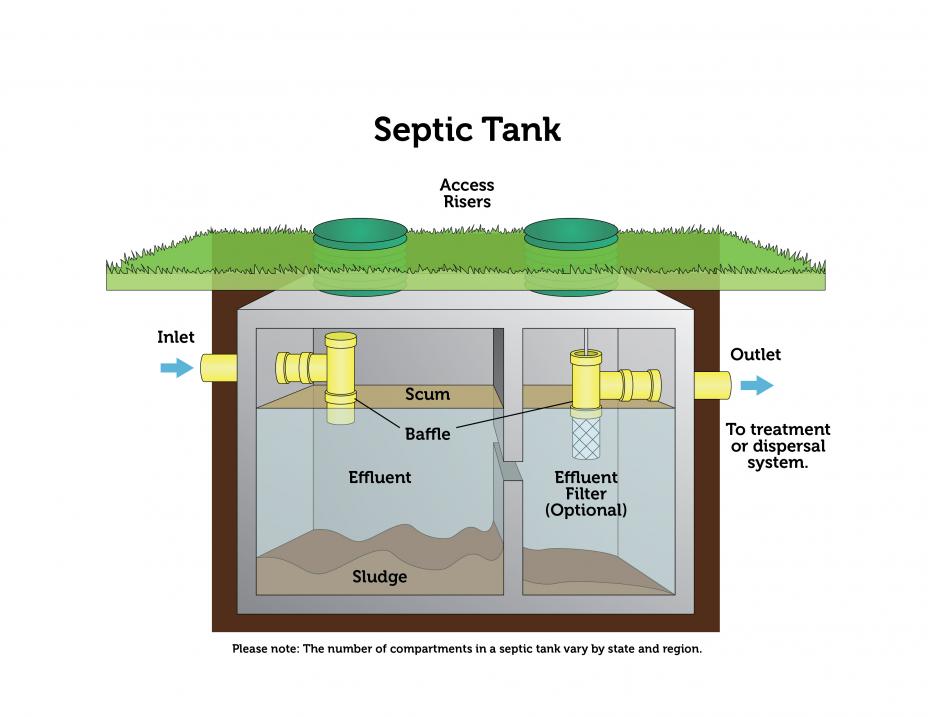Types of Septic Systems
Septic system design and size can vary widely, from within your neighborhood to across the country, due to a combination of factors. These factors include household size, soil type, site slope, lot size, proximity to sensitive water bodies, weather conditions, or even local regulations. Below are ten of the most common types of septic systems used. The list is not all-inclusive; there are many other types of septic systems.
Septic Tank
A buried, watertight tank designated and constructed to receive and partially treat raw domestic sanitary wastewater. Heavy solids settle to the bottom of the tank while greases and lighter solids float to the top. The solids stay in the tank while the wastewater is discharged to the drainfield for further treatment and dispersal.

Drip Distribution System
The drip distribution system is a type of effluent dispersal that can be used in many types of drainfields. The main advantage of the drip distribution system is that no large mound of soil is needed as the drip laterals are inserted into the top 6 to 12 inches of soil. The disadvantage of the drip distribution system is that it requires a large dose tank after the septic tank to accommodate the timed dose delivery of wastewater to the drip absorption area. Additional components, such as electrical power, are necessary for this system, requiring an added expense and increased maintenance.
Aerobic Treatment Unit
Aerobic Treatment Units (ATUs) use many of the same processes as a municipal sewage plant, but on a smaller scale. An aerobic system injects oxygen into the treatment tank. The additional oxygen increases natural bacterial activity within the system that then provides additional treatment for nutrients in the effluent. Some aerobic systems may also have a pretreatment tank and a final treatment tank including disinfection to further reduce pathogen levels.
The benefits of this system are that it can be used in homes with smaller lots, inadequate soil conditions, in areas where the water table is too high, or for homes close to a surface water body sensitive to contamination by nutrients contained in wastewater effluent. Regular life-time maintenance should be expected for ATUs.

Mound Systems
Mound systems are an option in areas of shallow soil depth, high groundwater, or shallow bedrock. The constructed sand mound contains a drainfield trench. Effluent from the septic tank flows to a pump chamber where it is pumped to the mound in prescribed doses. Treatment of the effluent occurs as it discharges to the trench and filters through the sand, and then disperses into the native soil.
While mound systems can be a good solution for certain soil conditions, they require a substantial amount of space and periodic maintenance.
Cluster/Community System
A decentralized wastewater treatment system under some form of common ownership that collects wastewater from two or more dwellings or buildings and conveys it to a treatment and dispersal system located on a suitable site near the dwellings or buildings. It is common to find cluster systems in places like rural subdivisions.
